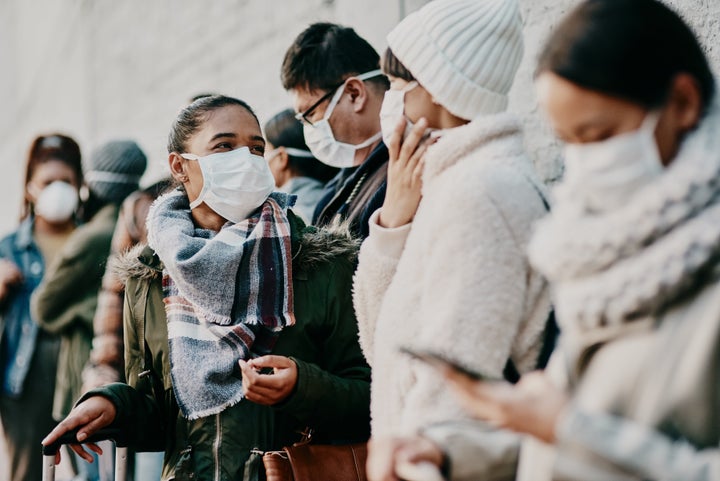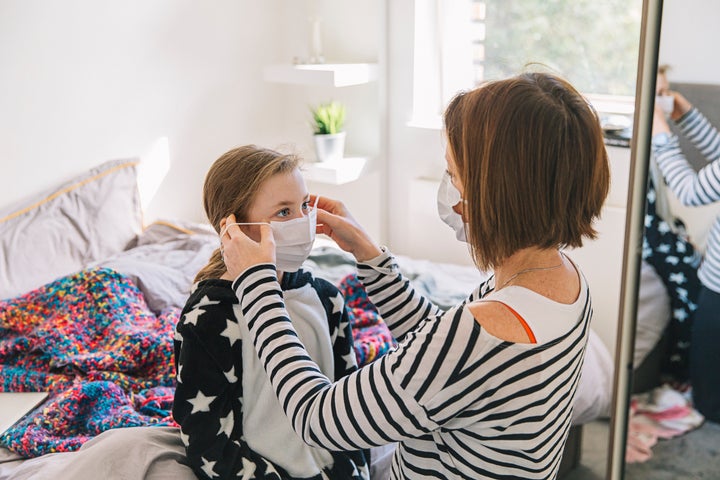
Wearing a face mask takes some getting used to. They can be a little uncomfortable, and it definitely feels awkward to leave the house with most of your face covered when you’re not used to doing that.
But they’re becoming more and more common across the country. Some stores, like Costco, are starting to refuse service to people who aren’t willing to wear masks. While this feels new and weird to many Canadians, it isn’t unheard of in other parts of the world. South Korea, like some other Asian countries, has encouraged the practice of wearing a face mask to avoid the spread of disease long before the COVID-19 pandemic.
They’re starting to become an important part of the fight against the virus here, which is why it’s important that we learn how to use them properly. Face masks can help stop the spread of the virus, but only if they’re put on, worn and taken off correctly.
Here are some of the most common questions around coronavirus face masks.
When should I be wearing a mask?
Masks are a good idea in any circumstance where it’s hard to put social distancing rules into place. When you’re going to buy groceries or taking public transit, or if you have a job where you’re in regular contact with people, it’s a good idea to wear a mask.
What kind of mask should I be wearing?
Health Canada wants to reserve N-95 and surgical masks for healthcare workers who most need them. For those of us who don’t work in medicine, who are wearing masks to the grocery store or on the bus, should be looking for reusable masks.
What’s the right way to wear a mask?
It has to cover your mouth, your chin, and your whole nose. The New York Times has a great series of illustrations of common mask mistakes: a lot of people will wear it over their mouth but not their nose, or leave gaps with lots of room on the sides.
Health Canada explains you should put the mask on your face so that it covers your mouth and nose completely, and adjust the straps as needed. There shouldn’t be any gaps of space on the sides — if that’s happening, your mask is too big.
Where do I buy masks?
A ton of businesses have pivoted to manufacturing masks, given the huge demand. Many independent fashion lines have started making their own, and buying from them can be a great way to support local small businesses.
Here’s a roundup of some of the Canadian retailers selling face masks.
Can I make my own?
If you have the ability and the time, then go for it! There are several DIY options available, even to people who aren’t gifted in the sewing department.
Here are some simple instructions for homemade masks, made from T-shirt, bandana or cloth.
What materials should masks be made of?
Masks need filter out the virus, but also be tolerable to wear, so they have to to be both breathable and dense. A lot of masks for sale are made of cotton, as it’s a fabric that covers both of those bases. Denim and canvas can work, too.
What should I do before I put my mask on?
Wash your hands!
Can I take my mask off briefly and then put it back on?
Nope. The problem with doing that is that any germs on the front of the mask will inevitably get on your hands, which will defeat the purpose of the mask. Wait until you’re safely inside and have washed your hands before you take off a mask.
What’s important to remember when using a mask?
Public health experts have said this a lot, but it’s worth remembering: wearing a mask can give a lot of people a false sense of security. Wearing a mask doesn’t mean you don’t need to follow social distancing guidelines — you absolutely still do.
Also, remember not to touch the front of your mask while you’re wearing it, and also not to touch your face. Doing that defeats the purpose of wearing a mask in the first place.

How do I safely take my mask off?
First, wash your hands. Remember that if you were exposed to germs, they’ll largely be on the front of the mask, over your mouth and nose. So try not to touch that part of the mask, and instead untie the back or unhook the ear loops.
How do I dispose of a single-use mask?
Remember that surgical masks aren’t recommended for people who aren’t working in medicine. But if that is what you’ve used, dispose of it by putting it into a plastic bag and putting that in the garbage. Obviously, masks should not be thrown onto the ground, as that can put other people at risk.
How do I wash a cloth mask?
Some masks will come with special washing instructions. But in all other situations, WebMD suggests washing them with hot water and detergent in the washing machine and then hand-drying them.
How often should I wash my mask?
After every use. Dr. Daniel Griffin, an expert on infectious diseases at Columbia University, says we should be treating homemade masks like underwear: they need to be washed every time you use them.
Should kids be wearing masks?
Kids under two shouldn’t wear masks, Health Canada says. Very young children have smaller airways, which can make it hard to breathe through a mask. But kids aged 2 and over should wear masks under the same circumstances as adults.

Okay, so are there any tips to stop kids from just ripping them off?
Masks aren’t super fun to wear, and can be a little scary, so it’s no surprise that some kids are resistant to them. Kids Health suggests using clear, simple language to explain why masks are important in an age-appropriate way.
They also say letting kids practice wearing masks can sometimes help them get used to the idea. Encouraging kids to decorate their own masks might be another way to get them back on your side.
Other than kids younger than two, who else should avoid face masks?
Anyone who has trouble breathing or who would have difficulty taking the mask off by themselves should not wear one, according to Health Canada. They also advise not to put a mask on someone who’s sleeping or who’s unconscious.
What do I do if my mask hurts my ears?
Choosing masks without ear loops is one way to combat this — the kinds that tie at the back take longer to put on, but they’ll keep your ears from getting irritated.
Some masks also come with buttons at the back that you can fashion an elastic around. Wearing a headband with a button on it can serve the same purpose.
And there are a lot of products designed to hook ear loops around. Here’s a roundup.
What do I do if my mask fogs up my glasses?
There are a couple different ways to combat this. Here’s a list of steps to take.
Can I share my mask with someone else?
No. Health Canada says a mask should be for one person’s use alone, unless it’s been thoroughly washed between uses.
Also on HuffPost: